Daneesh Majid and Yunus Y. Lasania
Hyderabad: On August 6, a day after Prime Minister Narendra Modi laid the foundation of the Ram Mandir, headlines of India’s largest and influential English newspapers were nothing short of a U-turn in comparison to what they screamed about 28 years when the Babri Masjid was razed to the ground by Kar Sevaks (Hindu volunteers), led BJP leaders, in Ayodhya.
While the large-scale support to the tragedy [of Babri Masjid’s demolition was not surprising, it is however interesting to see how the mainstream media houses have also changed their track in the present political situation, wherein the ruling Bharatiya Janata Party (BJP) has clearly set the agenda.
All one has to do is to look back about three decades ago, when one could perhaps say that India still had some semblance of being a secular-democratic nation. Revisiting the headlines of mainstream English newspapers from 1992 will simply tell us the somber mood that had gripped the country then.
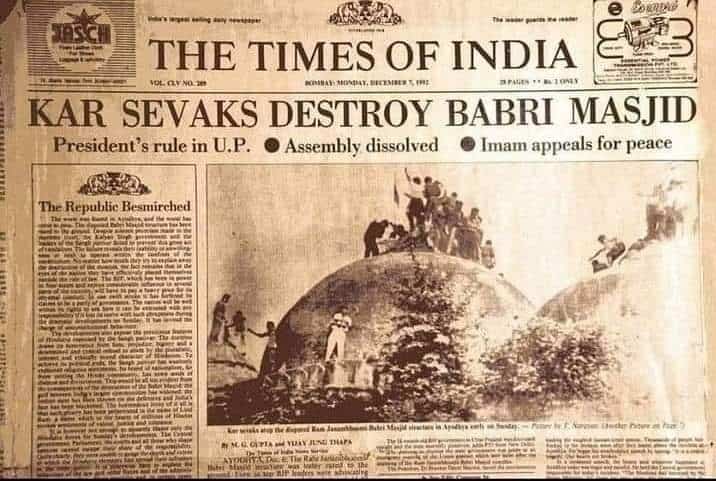
The contrast is telling. The 7 December, 1992, edition of Times of India screamed: ‘KAR SEVAKS DESTROY BABRI MASJID.’ It was accompanied by an editorial titled ‘The Republic Besmirched,’ which clearly indicated that the newspaper had taken a stand against the demolition ― for which some BJP leaders are still facing trial). Other headlines were also similar.
Back in 1992, when the country had not taken a right-wing turn like today, words like “outrage” and “destroyed” were used to describe the sentiment and act of razing the Babri Masjid. Exactly 28 years later, the entire news was focused on Modi and his participation in the bricklaying ceremonies of the Ram Mandir.
It is worthy to note that not a single newspaper recalled the demolition itself. For example, on 6 August, 2020, the Times of India’s headline contained an analogy from the PM’s speech, in which he likened the Ram Janambhoomi campaign to the national freedom movement. It is a far cry from the newspaper’s headline back in 1992.

Similarly, Deccan Chronicle went from ‘BABRI DESTROYED’ in 1992, to a laudatory and welcoming headline that read, ‘Ram Lalla comes home, a new Masjid to rise’ from 10 November 2019, after the Supreme Court gave its verdict.
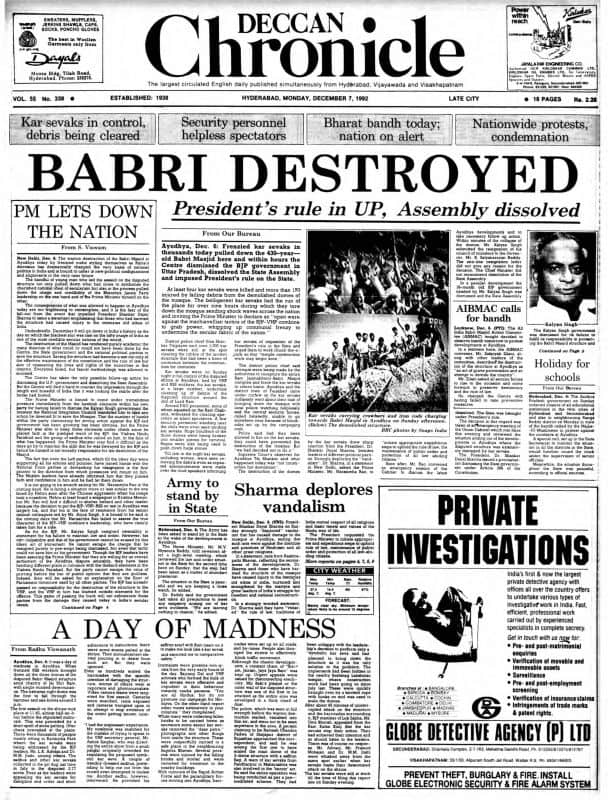

The publication, on 6 August, had an unsurprising headline that read ‘PM Modi lays first brick of Ram Rajya’, which was in tune with a headline after the verdict that gave way for the construction.
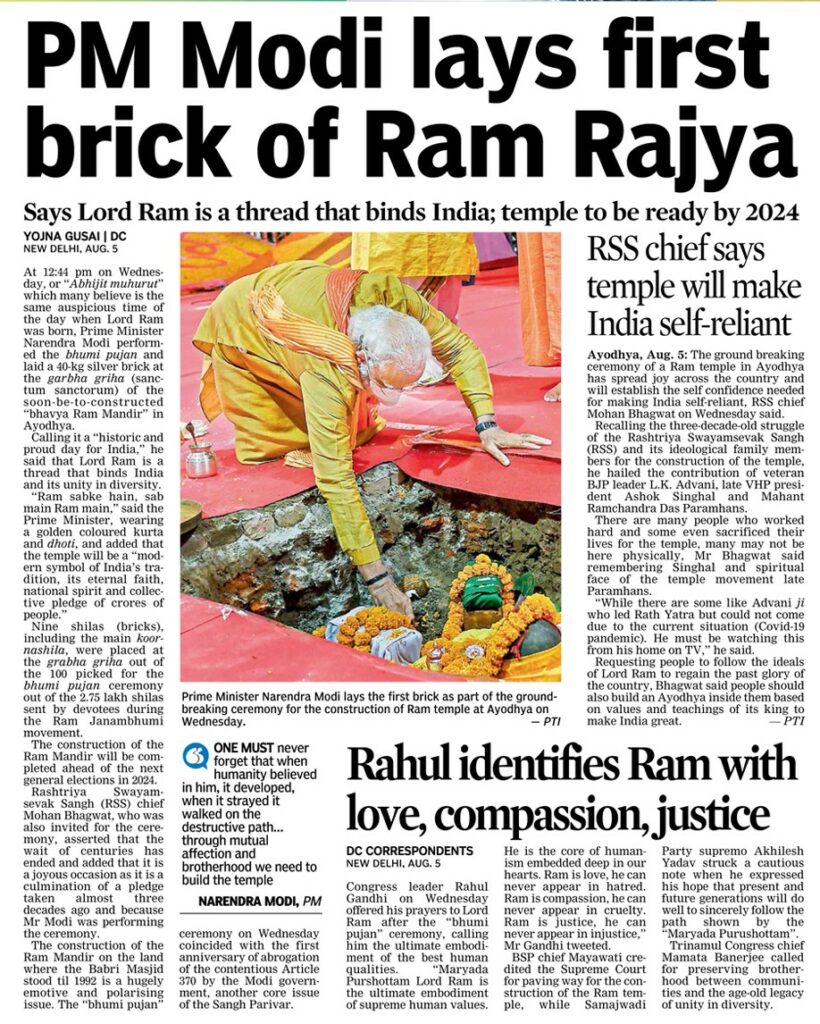
In fact, below its page-one main headline, another article emphasizing Rahstriya Swayamsevak Sangh chief Mohan Bhagwat’s statement of “making India self-reliant.”
Even with Indian Express and Hindustan Times, the headlines tell a tale of a transition from anger to an implicit acceptance to the new pro-Hindutva sentiment that has permeated and changed India’s political and social landscape. That too, after the rise of Narendra Modi as Prime Minister in 2014.

Among English newspapers, Indian Express has always claimed higher standards of journalism with its ‘Journalism of courage’ tagline. In 1992, after the Babri Masjid’s demolition, its Page-1 headline, ‘Disputed Structure Pulled Down,’ was accompanied by an editorial titled ‘A Nation Betrayed.’
Those words alone are self-explanatory of the past.
But the same newspaper on 6 August, with its headline ‘Modi marks the Mandir’, this year marked a departure from its own sense of betrayal that it conveyed through its editorial 28 years ago.
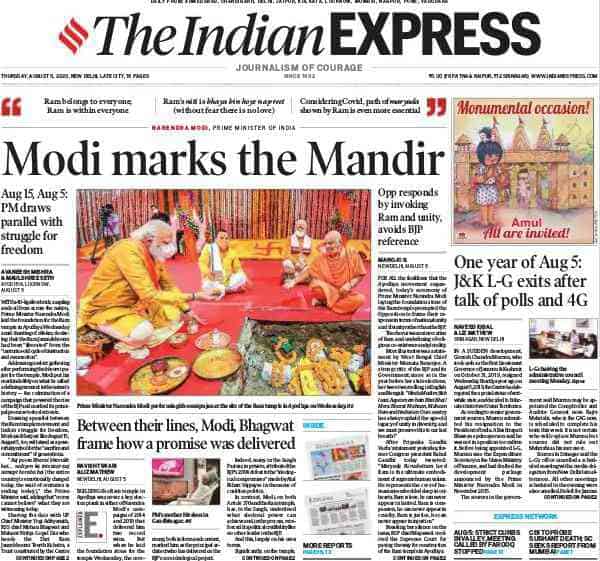
Notable exceptions
However, there are always those who never think twice about swimming against the tide. The Telegraph was the only paper that visibly took a stand against the construction of the Ram Mandir. It stayed true to its usual style of scathing criticism through creative headlines.
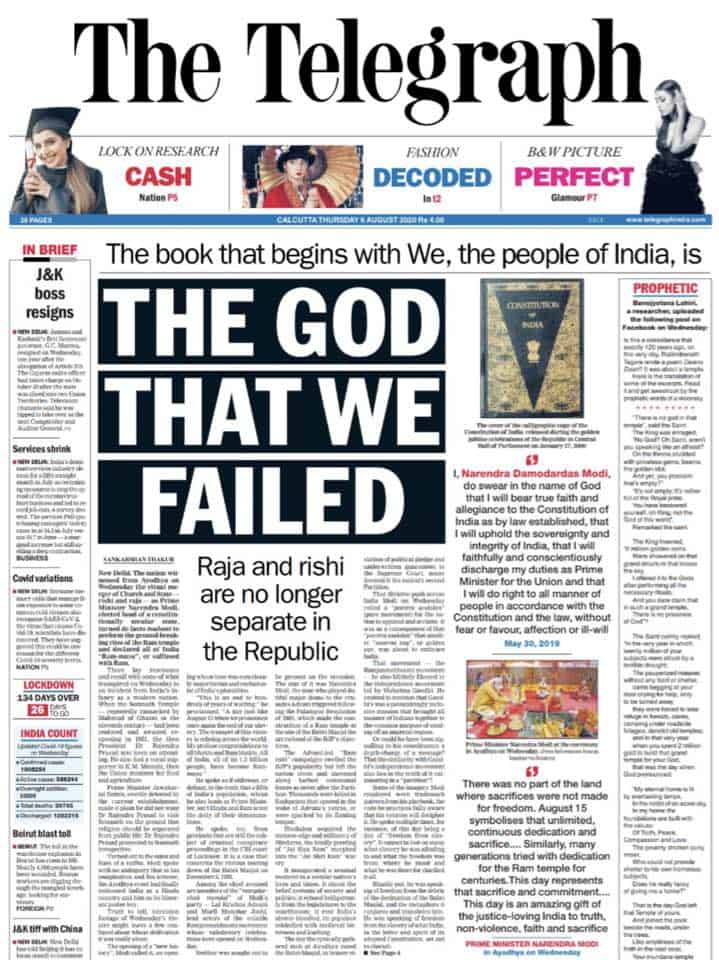
While the main headline screamed ‘THE GOD THAT WE FAILED’, in highlighted words, it also reminded India of its most important book ― the Constitution. The text which reads ‘The book that begins with We, the people of India, is,’ was followed by a picture of the constitution itself. The West-Bengal headquartered newspaper even dug out Modi’s oath which he re-took as prime minister in 2019.
It must also be noted that the only political opposition also came from the state. Unlike other opposition leaders, the All India Trinamool Congress supremo and West Bengal Chief Minister Mamata Banerjee, had the courage to take a stand.
Below is what she tweeted on August 5.

